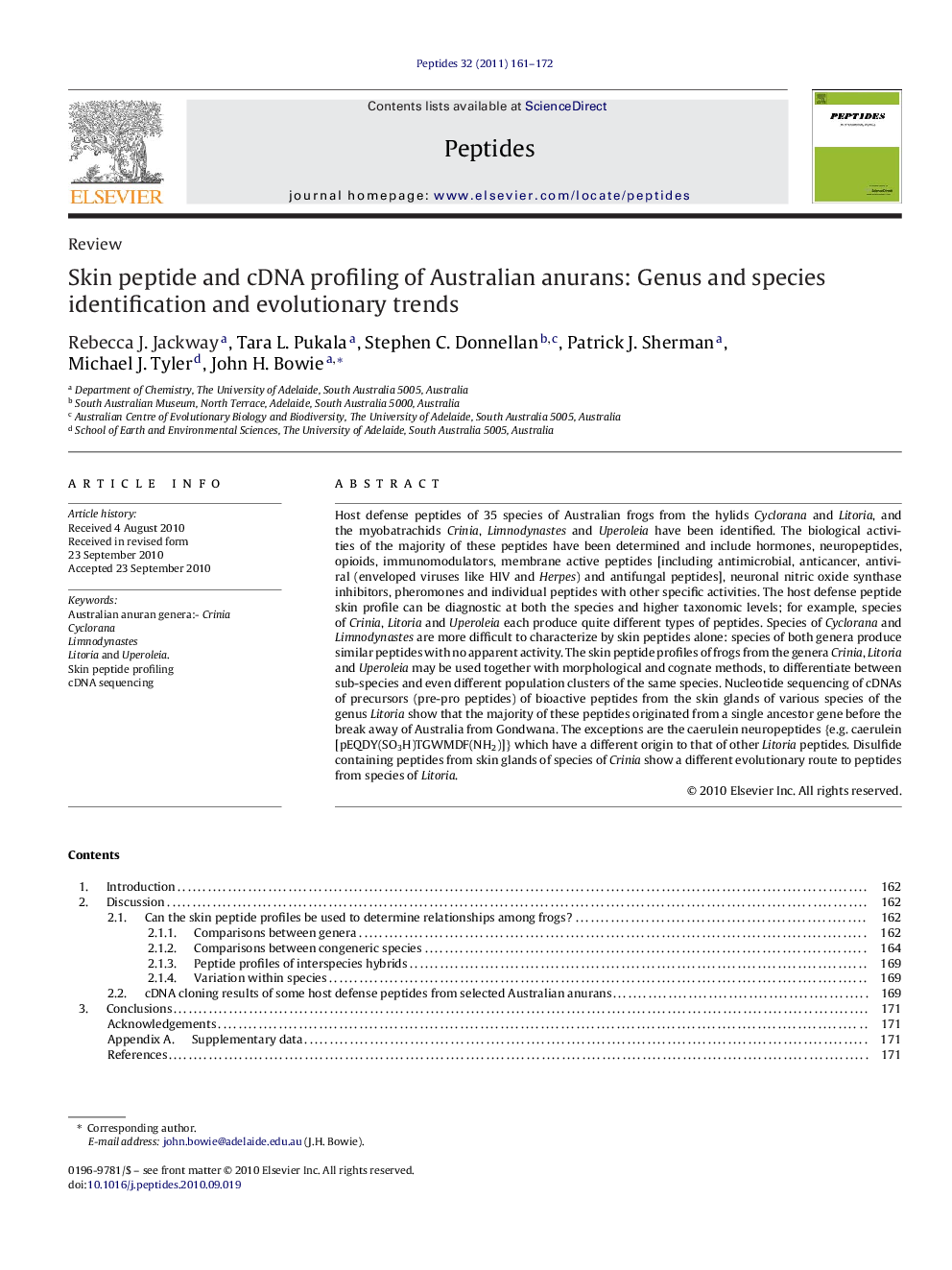| Article ID | Journal | Published Year | Pages | File Type |
|---|---|---|---|---|
| 2006518 | Peptides | 2011 | 12 Pages |
Host defense peptides of 35 species of Australian frogs from the hylids Cyclorana and Litoria, and the myobatrachids Crinia, Limnodynastes and Uperoleia have been identified. The biological activities of the majority of these peptides have been determined and include hormones, neuropeptides, opioids, immunomodulators, membrane active peptides [including antimicrobial, anticancer, antiviral (enveloped viruses like HIV and Herpes) and antifungal peptides], neuronal nitric oxide synthase inhibitors, pheromones and individual peptides with other specific activities. The host defense peptide skin profile can be diagnostic at both the species and higher taxonomic levels; for example, species of Crinia, Litoria and Uperoleia each produce quite different types of peptides. Species of Cyclorana and Limnodynastes are more difficult to characterize by skin peptides alone: species of both genera produce similar peptides with no apparent activity. The skin peptide profiles of frogs from the genera Crinia, Litoria and Uperoleia may be used together with morphological and cognate methods, to differentiate between sub-species and even different population clusters of the same species. Nucleotide sequencing of cDNAs of precursors (pre-pro peptides) of bioactive peptides from the skin glands of various species of the genus Litoria show that the majority of these peptides originated from a single ancestor gene before the break away of Australia from Gondwana. The exceptions are the caerulein neuropeptides {e.g. caerulein [pEQDY(SO3H)TGWMDF(NH2)]} which have a different origin to that of other Litoria peptides. Disulfide containing peptides from skin glands of species of Crinia show a different evolutionary route to peptides from species of Litoria.
Research highlights▶ Different Australian anurans produce different host-defense skin peptide profiles. Whether these differences indicate different populations of a particular species, different sub-species or different species, need to be determined in conjunction with morphological and cognate studies. ▶ cDNA sequencing indicates that the majority of bioactive skin peptides from species of Litoria have arisen from the same ancestor gene. An exception is the smooth muscle peptide caerulein. ▶ cDNA studies show that disulfide-containing skin peptides from the toadlets Crinia signifera and C. riparia have evolved by a different pathway from skin peptides from Litoria.
